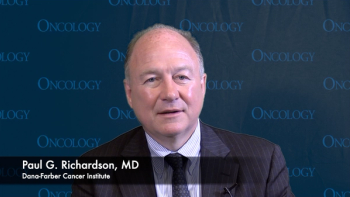
Paul G. Richardson, MD, presented data from the phase 3 DETERMINATION study at 2022 ASCO and theorized how these findings could extend to similar regimens in newly diagnosed multiple myeloma.

Your AI-Trained Oncology Knowledge Connection!


Paul G. Richardson, MD, presented data from the phase 3 DETERMINATION study at 2022 ASCO and theorized how these findings could extend to similar regimens in newly diagnosed multiple myeloma.

Paul G. Richardson, MD, looks at MRD data from the DETERMINATION study for its potential to guide treatment selection in newly diagnosed multiple myeloma.

Paul G. Richardson, MD, uses results of the DETERMINATION study that were presented at 2022 ASCO to justify choice of appropriate therapy for individual patients with treatment-naïve multiple myeloma.

At 2022 ASCO, Paul G. Richardson, MD, dives into results of the DETERMINATION study, which examined triplet therapy with lenalidomide plus either lenalidomide maintenance until progression or autologous stem transplantation in newly diagnosed multiple myeloma.

At 2022 ASCO, Paul G. Richardson, MD, reviewed the rationale of the phase 3 DETERMINATION study that set out to determine the benefit of lenalidomide maintenance with or without autologous stem transplantation in newly diagnosed multiple myeloma.
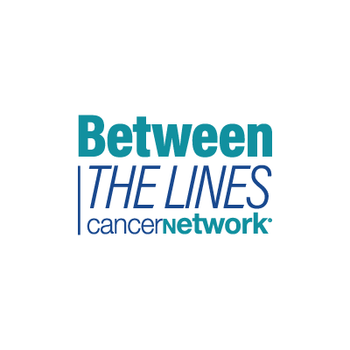
Paul G. Richardson, MD, and Christina Gasparetto, MD, offer insights into the use of proteasome inhibitors in relapsed or refractory multiple myeloma.
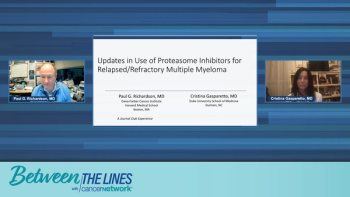
Experts share their excitement for upcoming PFS trial data to be presented on the combination of ixazomib, pomalidomide, and dexamethasone in multiple myeloma.

Expert perspectives on the triplet combination of ixazomib, pomalidomide, and dexamethasone in multiple myeloma presented at the 2021 ASH [American Society of Hematology] Annual Meeting.

Continuing their discussion on the management of multiple myeloma, experts Paul Richardson, MD, and Cristina Gasparetto, MD, consider the value of minimal residual disease as a marker.

Insight on the ASH 2021 update highlighting response rates and discontinuation in patients who received in-class transition from bortezomib to ixazomib for multiple myeloma.

Reflections on the patient-reported adherence and outcome data with IRd (ixazomib, lenalidomide, dexamethasone) therapy after an in-class transition from bortezomib to ixazomib for patients with multiple myeloma.

Experts Paul Richardson, MD, and Cristina Gasparetto, MD, discuss trial data analyzing the in-class transition from bortezomib to ixazomib for patients with multiple myeloma.

Expert perspectives on data from the TOURMALINE-MM1 trial, which tested ixazomib therapy in patients with relapsed/refractory multiple myeloma.

Shared insight on how real-world experience and data with proteasome inhibitors in multiple myeloma compare to what was seen in clinical trials.

A broad look at the historical use of proteasome inhibitor therapy in patients with multiple myeloma centered on 3 agents: bortezomib, carfilzomib, and ixazomib.
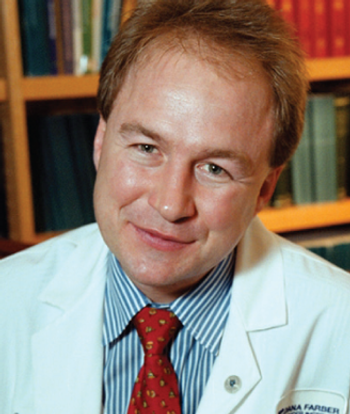
Myeloma is clearly not one disease but several. In terms of treatment choices, it is increasingly evident that one size of treatment does not fit all. Moreover, as therapy is tailored to each individual patient, with the ability to mobilize and collect stem cells and retain them after successful induction/remission therapy, younger patients have choices.

This management guide covers the symptoms, diagnosis, screening, staging, and treatment of multiple myeloma, smoldering myeloma, and other plasma cell dyscrasias.

The real promise of improving patient outcomes in IgD and IgE multiple myeloma lies in multi-drug combinations, next-generation agents, and immunotherapy.

Monoclonal gammopathy of undetermined significance (MGUS) is the most prevalent of the plasma cell dyscrasias and is characterized by a low level of production of serum monoclonal (M) protein (classically less than 3 g/dL).
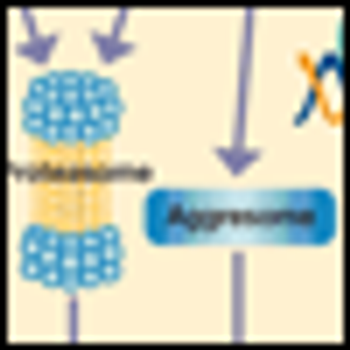
Responses to treatment of relapsed and refractory multiple myeloma are characteristically short, and median survival is as brief as 6 months. Although prognostic factors in the context of relapsed and refractory disease require further characterization, high-risk patients include those with certain cytogenetic abnormalities, high β2-microglobulin, and low serum albumin.

Multiple myeloma is a disseminated malignancy of monoclonal plasma cells that accounts for 15% of all hematologic cancers. In 2009, an estimated 20,580 new cases will be diagnosed in the United States, and 10,580 Americans will die of this disease. Incidence rates for myeloma (5.3 in men and 3.5 in women) and mortality rates (3.7 in men and 2.5 in women) per 100,000 population have remained stable for the past decade.

Liposomal doxorubicin received FDA approval for use in combination with bortezomib in patients with multiple myeloma who have not previously received bortezomib and have received at least one prior therapy.

Our better understanding of the complex interaction of multiple myeloma (MM) cells with their bone marrow microenvironment and the signaling pathways that are dysregulated in this process has resulted in a dramatic increase in the therapeutic agents available for this disease. A number of these new agents have demonstrated significant activity in patients with MM. Over the past 5 years, three drugs have received approval from the US Food and Drug Administration for therapy in MM—bortezomib, thalidomide, and lenalidomide. To date, the choice of therapy for MM is not individualized according to the biologic characteristics of the disease, but future studies should enable us to identify patients who may benefit most from certain therapeutic interventions, and thus develop individualized therapy for MM. In this review, we will present some of the treatment algorithms currently developed for patients with MM and focus on established advances in therapy, specifically with thalidomide, bortezomib, and lenalidomide. We will also discuss some of the emerging novel therapeutic agents showing promise in phase I/II clinical trials in MM.

In 2004, multiple myeloma was diagnosed in more than 15,000 peoplein the United States and will account for approximately 20% of deathsdue to hematologic malignancies. Although traditional therapies suchas melphalan (Alkeran)/prednisone, combination chemotherapy withVAD (vincristine, doxorubicin [Adriamycin], and dexamethasone), andhigh-dose chemotherapy with stem cell transplantation have shownsome success, median survival remains between 3 to 5 years. Treatmentoptions for patients with multiple myeloma have increased in recentyears, with the promise of improvement in survival. New agents, suchas the proteasome inhibitor bortezomib (Velcade), the antiangiogenicand immunomodulator thalidomide (Thalomid) and its analogs, suchas lenalidomide (Revlimid), together with other small molecules, includingarsenic trioxide (Trisenox), and other targeted therapies, havebeen studied alone and in combination with other antineoplastic therapies,either as induction therapy prior to stem cell transplantation or inpatients with relapsed disease. Bortezomib recently was approved inthe United States for the treatment of multiple myeloma in patientswho have received at least one prior therapy. The use of bortezomibbasedregimens as front-line therapy as well as the use of other agentsin multiple myeloma remain under investigation, and approvals forboth thalidomide and lenalidomide are hoped for soon, with the overallprospect of patient outcome continuing to be increasingly positive.
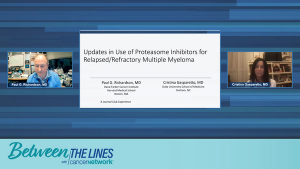
Published: March 21st 2022 | Updated:
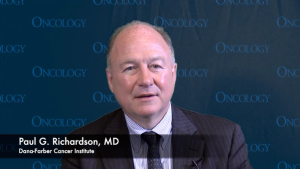
Published: August 10th 2022 | Updated:

Published: April 18th 2022 | Updated:

Published: April 11th 2022 | Updated:

Published: March 13th 2010 | Updated:

Published: November 1st 2007 | Updated: